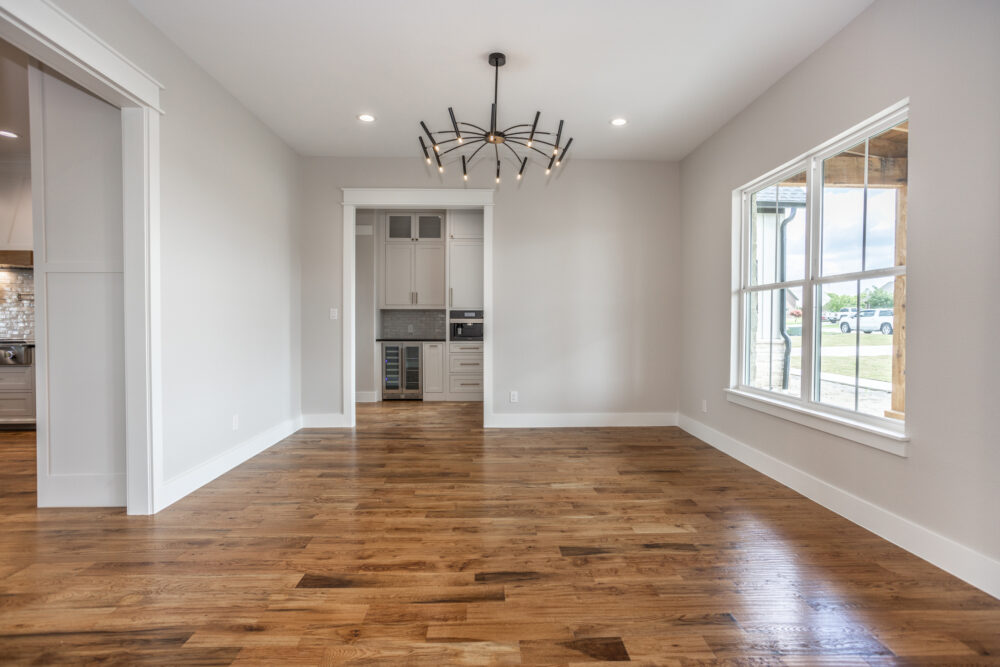Flooring Replacement: When DIY Won’t Cut It
Every homeowner has been there: you’re walking through your living room when you notice that loose floorboard creaking a little louder than usual, or perhaps you’ve spotted water damage spreading beneath your kitchen tiles. According to the National Association of Home Builders, flooring issues account for nearly 15% of all home repair calls, making them one of the most common problems homeowners face. The good news is that many flooring problems are completely manageable when addressed promptly and properly.
However, the difference between a quick fix and a lasting solution often comes down to understanding when professional intervention is necessary. At Complete Construction, we’ve seen countless cases where well-intentioned DIY attempts actually made problems worse, turning what could have been a simple repair into a complete flooring replacement project.

Understanding Common Flooring Problems: Hardwood Floor Issues
Hardwood floors are particularly susceptible to moisture damage, which can cause warping, cupping, or gaps between boards. These issues often start small but can quickly escalate if the underlying moisture source isn’t properly addressed. While surface scratches and minor scuffs can sometimes be handled with basic refinishing techniques, structural problems like subfloor damage require professional assessment.
Temperature fluctuations throughout the seasons can also cause hardwood to expand and contract, leading to creaking sounds or boards that feel loose underfoot. What many homeowners don’t realize is that these symptoms might indicate problems with the subfloor or improper installation techniques that need professional correction.
Tile and Grout Complications
Cracked tiles and deteriorating grout are more than just cosmetic concerns. When grout fails, it allows moisture to penetrate beneath the surface, potentially causing mold growth or structural damage to the subfloor. Loose tiles can create safety hazards and often indicate adhesive failure or movement in the underlying structure.
The challenge with tile repairs is that they require precise matching of materials and proper preparation of the substrate. Professional installers understand how different tile materials respond to moisture and temperature changes, ensuring repairs blend seamlessly with existing flooring.
Carpet and Vinyl Concerns
Carpet problems like persistent odors, visible wear patterns, or rippling often signal issues that go beyond the surface. Pet accidents, water damage, or poor initial installation can create problems that simple cleaning won’t resolve. Similarly, vinyl flooring that’s peeling, bubbling, or showing gaps may need complete replacement rather than patching.
When Replacement Becomes Necessary
Sometimes flooring problems are too extensive for repair. Water damage that has penetrated the subfloor, widespread wear that affects the structural integrity of the flooring, or repeated failed repairs often indicate that replacement is the most cost-effective solution.
Professional contractors can assess the extent of damage using specialized tools and techniques that aren’t available to typical homeowners. They can identify whether problems are isolated or part of a larger pattern that suggests systemic issues with moisture control, ventilation, or initial installation quality.
The Professional Advantage
While DIY flooring repairs might seem appealing from a cost perspective, professional installation offers significant advantages that often justify the investment. Experienced contractors have access to commercial-grade materials, specialized tools, and industry knowledge that ensures repairs last longer and perform better.
Professional flooring specialists understand local building codes and can identify potential problems before they become major issues. They also provide warranties on their work, giving you peace of mind that your investment is protected. Perhaps most importantly, they can spot underlying problems that might not be obvious to untrained eyes, preventing costly surprises down the road.
The installation process itself requires specific techniques for different flooring types. Proper subfloor preparation, moisture barriers, expansion gaps, and adhesive application all require expertise that comes from years of experience. Even small mistakes in these areas can lead to premature failure and the need for complete reinstallation.
Making the Right Choice for Your Home
Your floors are a significant investment in your home’s comfort, safety, and value. While minor maintenance tasks might be appropriate for DIY approaches, structural repairs and replacements benefit enormously from professional expertise. The initial cost of professional installation is often offset by the longevity and performance of properly installed flooring.
At Complete Construction, we understand that flooring decisions affect your daily life and your home’s long-term value. Our experienced team can help you assess your current flooring situation and recommend the most appropriate solutions for your specific needs and budget.
Whether you’re dealing with minor repairs or planning a complete replacement, we’re here to ensure your floors provide years of reliable service and satisfaction. Contact Complete Construction today to schedule a professional assessment and discover how proper flooring repairs can enhance your home’s comfort and value.
